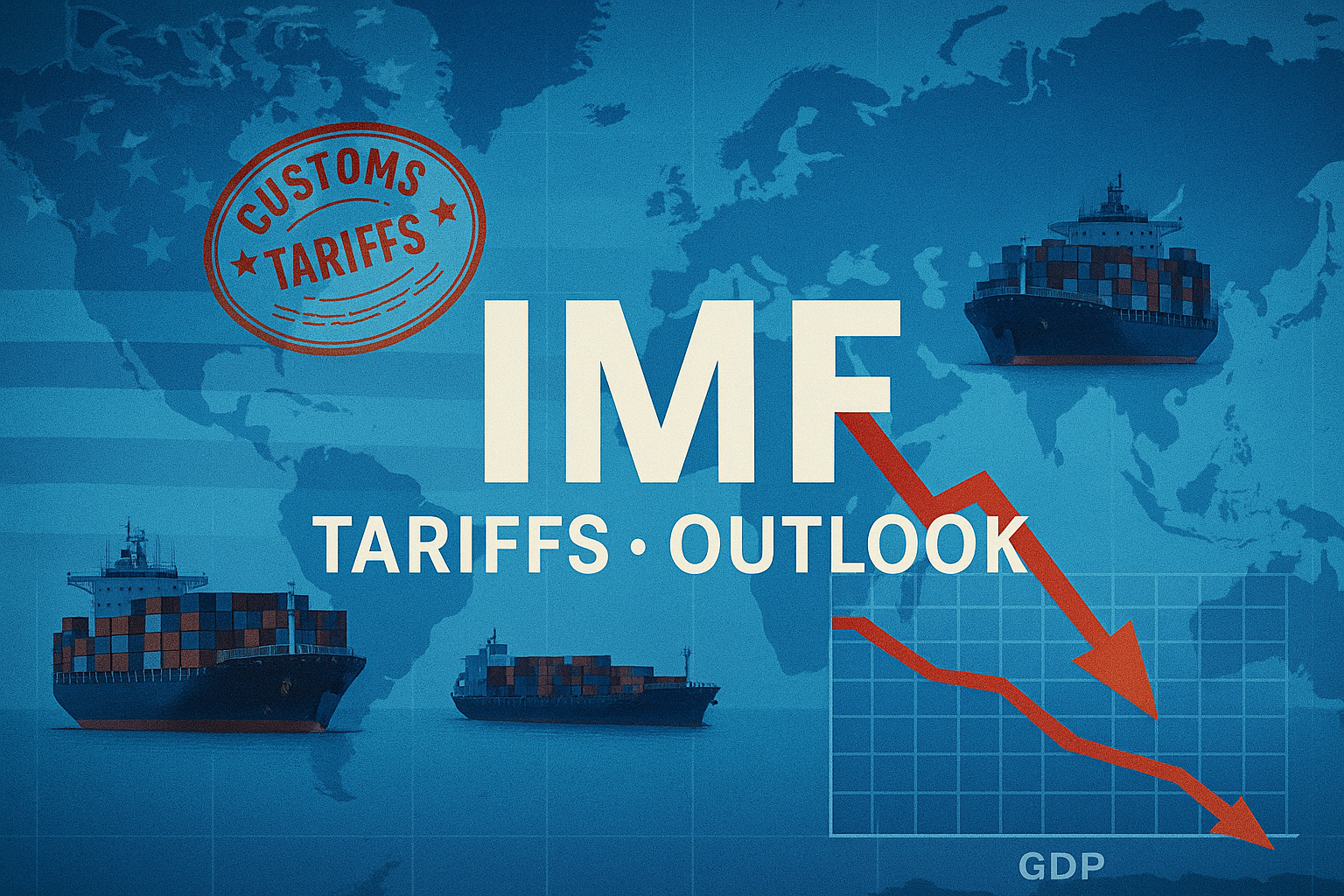IMF: Trump Tariffs to Dim Global Economy in Short and Long Term
By Tredu.com • 10/14/2025
Tredu

Introduction
The International Monetary Fund (IMF) warned that Trump’s tariffs will dim the global economy in the short and long term, even as it nudged 2025 growth higher. In its October assessment, the Fund said firms and consumers have so far cushioned part of the shock through front-loading, rerouting supply chains, and absorbing costs, but these buffers are temporary. The message: near-term resilience does not erase mounting long-term damage from broad-based trade barriers.
What changed in the outlook
The IMF lifted its 2025 global growth forecast to about 3.2% (from ~3.0% in July) on milder-than-expected tariff pass-through to date, better financial conditions, and targeted fiscal support. The U.S. outlook was raised to roughly 2.0% growth in 2025, helped by robust investment, including AI-related capex. Europe and Japan saw modest upgrades as consumption stabilized. Still, the Fund emphasized that headline numbers mask deterioration risks if tariff rates climb or spread.
Why the IMF still sounds cautious
The Fund argues that the tariff shock is here, and the full effects arrive with a lag. Retailers and importers have been “eating” duties, smoothing price hikes over months while re-engineering supply chains. As those cushions fade, inflation pressures can re-emerge and real incomes weaken. Moreover, threatened escalation, such as mooted 100% levies on Chinese goods, could knock up to ~1.8 percentage points off global growth by 2027 in adverse scenarios.
Near-term mechanics: resilience with frictions
In the short run, businesses are sidestepping some costs by shifting sourcing, splitting shipments, or accelerating orders ahead of tariff steps. Financial markets have taken comfort in that resilience. But redirection is inefficient: it raises logistics costs, fragments markets, and saps productivity, leaving less room for investment elsewhere. The IMF also cautions that immigration and labor-market frictions in key economies could amplify price and wage stickiness if supply growth slows.
Long-term damage channels
Capital deepening and productivity: Persistent trade barriers reduce competition and technology diffusion, impeding productivity gains.
Fragmentation costs: Firms duplicate capacity to serve tariff walls, pushing up unit costs and lowering global efficiency.
Macro volatility: Uncertain trade rules elevate risk premia, discouraging long-horizon projects. In aggregate, these forces dim the global outlook beyond 2025, even if next year’s print looks better.
Country and sector snapshots
- United States: Growth upgraded to ~2.0% in 2025, but the IMF notes that delayed tariff pass-through could lift prices later and trim consumption. AI investment is a support, yet not a cure-all.
- China: Growth steady near 4.8% in 2025, with tariffs and property-sector strains capping momentum; rerouted exports soften the blow but at a cost.
- Europe & Japan: Slight upgrades on fiscal supports and resilient consumption, though both remain exposed to external demand and investment swings.
- Trade-sensitive sectors: Consumer goods, electronics, and machinery face the steepest frictions; longer lead times and inventory swings heighten earnings volatility. (IMF thematic analysis.)
Market implications
For investors, the IMF’s stance implies two-track risk: a modest 2025 growth upgrade but a downgraded distribution beyond that, skewed by tariff escalation. Curve pricing may under-estimate later-cycle inflation wiggles if costs shift to consumers. Equity multiples in globally exposed sectors could face pressure should effective tariff rates rise from current levels.
What to watch next
- Policy signals: Any concrete tariff steps or carve-outs in U.S.–China trade will reset forecasts quickly.
- Pass-through metrics: Import prices, retail margins, and goods inflation in the U.S. and Europe will show whether duties are moving to consumers.
- WEO/OECD updates: Fresh multilateral projections and sensitivity analyses will refine the “dim long-term” baseline.
Conclusion
The IMF’s message is nuanced: a small 2025 forecast upgrade alongside a warning that Trump’s tariffs will dim global growth in both the short and the long term if trade tensions intensify and pass-through accelerates. Resilience today doesn’t guarantee strength tomorrow, the tariff shock’s longer tail could define the cycle.

How to Trade Like a Pro
Unlock the secrets of professional trading with our comprehensive guide. Discover proven strategies, risk management techniques, and market insights that will help you navigate the financial markets confidently and successfully.


